Jeff Lemire’s upcoming reformation and relocation of the JLA North of the Border made me think of other comic book enterprises that had their field of operations somewhere in the Land of the Maple Leaf. Captain Canuck, Northguard, and Fluer de Lys were active on Canadian soil. Scott Pilgrim’s adventures took place in Toronto. David Collier’s Hamilton Illustrated takes place entirely in Hamilton. There are probably tons more, but I am relatively weak on anything in comics after 1975.
Let me then try to point to a few times in the WECA books that specifically locate the action on Canadian soil or at least, in some way, make it clear that the story is taking place in Canada or, finally, directly connect the story to Canada.
Of course most of the Nelvana run in Triumph Comics takes place in the far north, above the Arctic Circle and Brock Windsor’s exploits in that fabled Land Beyond the Mists take place a Burroughs-like Lost World somewhere in the Canadian Wilderness. Many adventures, like those of Canada Jack in Educational Projects’ Canadian Heroes Comics are about counteracting the Axis efforts at espionage and sabotage on the home front.
Let’s examine some instances in the Bell Features books.
In Triumph Comics No. 8, a newly minted (first appearance and origin in the first Bell Features Triumph just an issue before) Captain Wonder foils Axis subterfuge in the Thousand Islands region of Eastern Ontario. Leading Canadian figures are being killed in explosions that originate with a Nazi Suicide Squad called “The Legion of Living Bombs” whose members imbibe a mysterious liquid that causes them to explode an hour later.
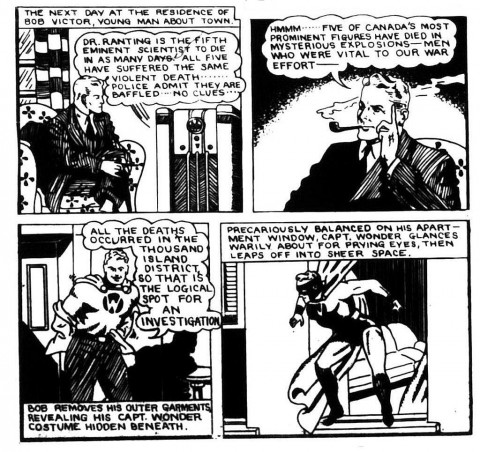
This Legion is dropped off in the St. Lawrence by a Nazi U-Boat that Wonder soon destroys. He then beats up all the members of the team except for Schultz, their leader, who swallows a large dose of the potion.
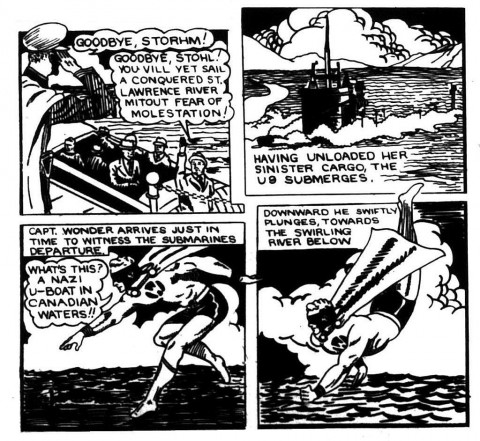
Captain Wonder and his pals quickly evacuate the island they all were on and the subsequent explosion obliterates it. The final panel twists out a humorous conclusion.
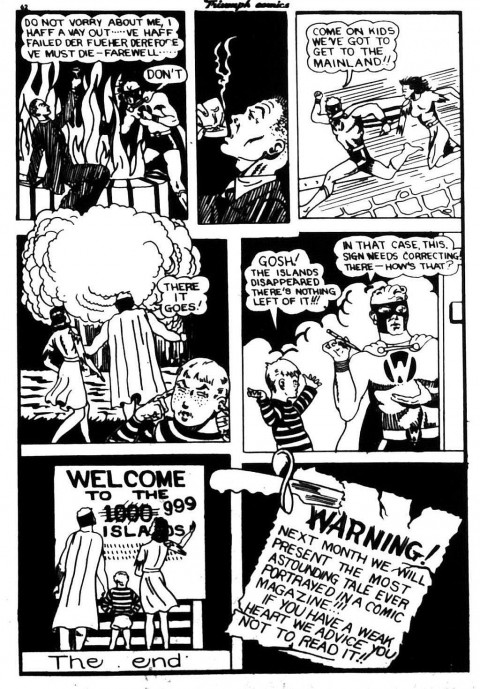
In Active Comics No. 8, Thunderfist (by this time probably taken over completely from E. T. Legault by Murray Karn), who is an American, is flying to Canada as scientist Randy Steele because he’s been invited to appear at a conference of scientists in Ottawa. As the plane is flying over Lake Ontario a huge Nazi created water spout rises out of the lake and knocks the aircraft out of the sky. All the passengers seem to survive and are picked up by an American boat except Randy who changes into Thunderfist at the bottom of the lake and picks up the German saboteurs on his all-seeing wrist TV.
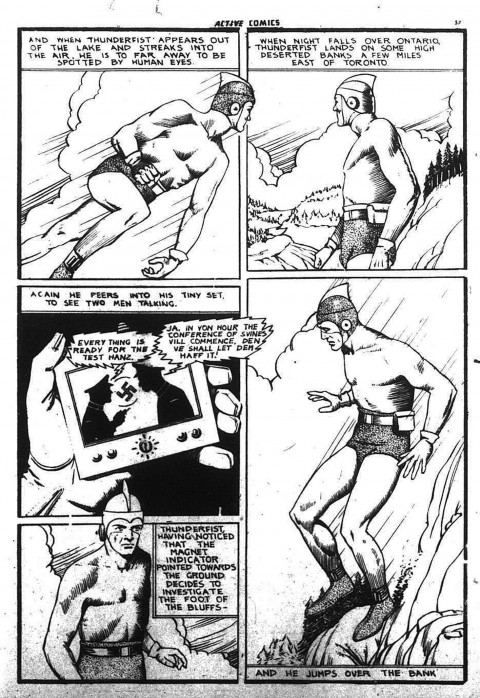
He flies out of the lake and lands on what seem to be the Scarborough Bluffs where he finds the Nazis in a cave and disposes of them. He thwarts their plans and causes a Nazi U-Boat also in Lake Ontario to destroy evidence of the Scarborough Nazi base with torpedoes and then proceeds to destroy the Nazi U-Boat. At the end of the story, and to the relief of his girlfriend Beverly Holmes, Randy explains that he was rescued by a Canadian boat.
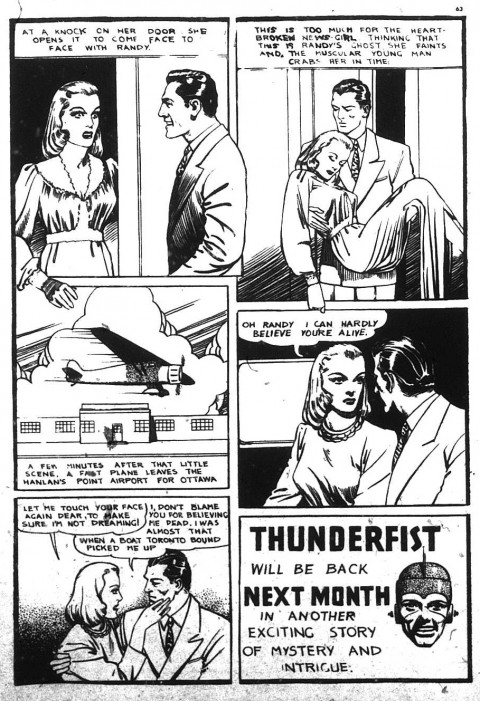
In the final panels the pair leaves together for the Ottawa conference on a plane that departs from Toronto Island’s Hanlan’s Point Airport.
In the same issue of Active (No. 8) it’s made clear on the Brain story (“The Scarlet Zombie”) that the superhero operates in Toronto.
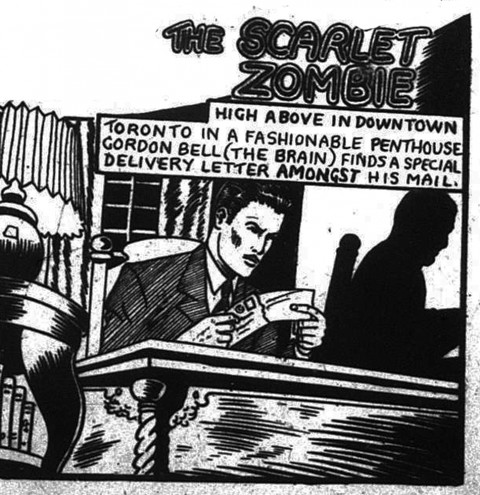
In Joke Comics No. 6 creator John Hilkert makes it clear that Trixie Rogers (The Wing’s alter ego) whose main job is writing about The Wing in magazines (sort of an early foreshadowing of Peter Parker’s taking pictures of Spiderman for J. Jonah Jameson some twenty years later) is a Canadian who also works, as many women in Rosie the Riveter fashion did at the time, at helping out the war effort with factory work.
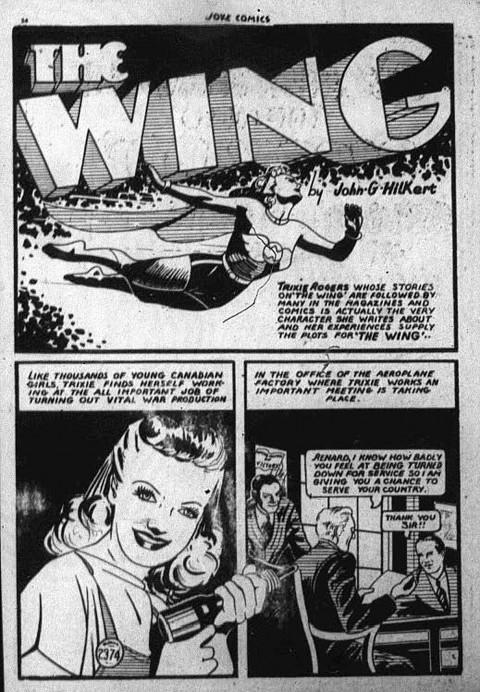
In Triumph Comics No. 11, in the Speed Savage story “Blood on the Snow,” Speed enters a regional skiing competition that takes place at a Toronto Ski Club (I don’t know how many ski runs they have in good old T.O. even in the forties) in the hopes of winning and going on to the Dominion Championships in Quebec. Speed wins, of course, and the rest of the drama unfolds at St. Anne’s in Quebec.
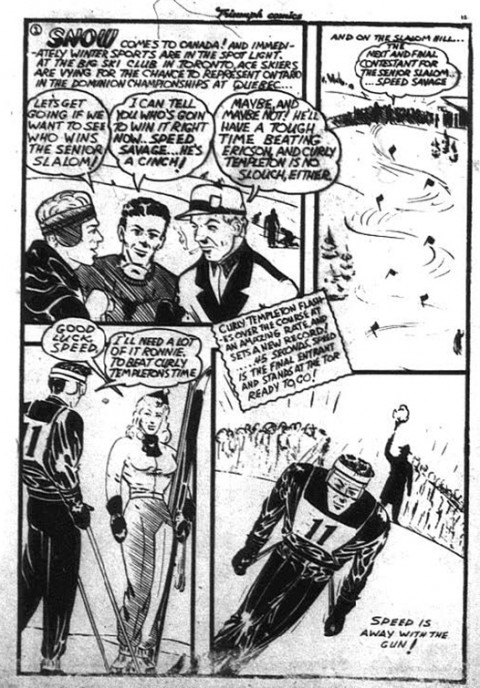
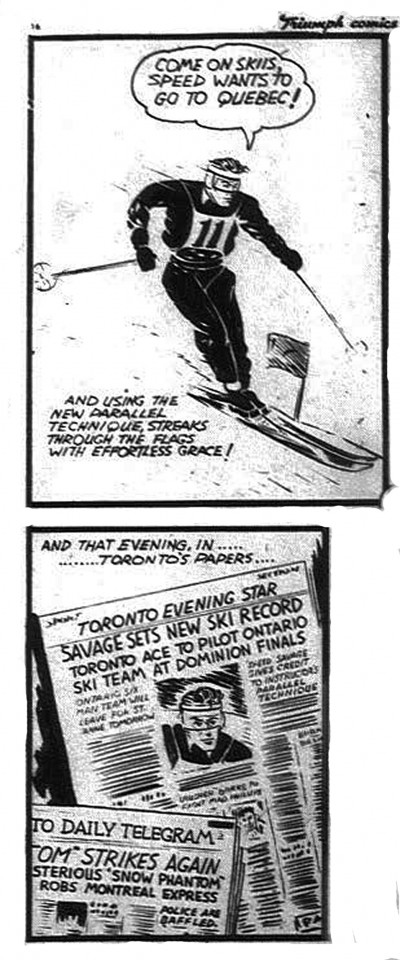
In Triumph Comics No. 17, Headquarters sends Ace Barton out to Burma to ferret out a fifth column mole on a squadron team. The panel that introduces the team to Ace is a telling nod to Canada.
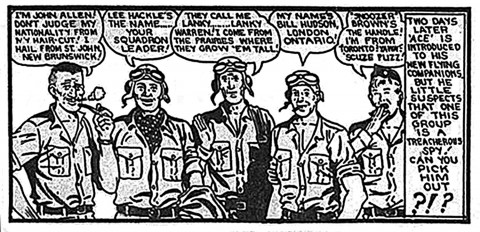
Finally, in Wow Comics No. 22, in the closing panels of Adrian Dingle’s Penguin story we find the title character welcoming a new pair of crime fighters to Canada and to the pages of Bell Features.
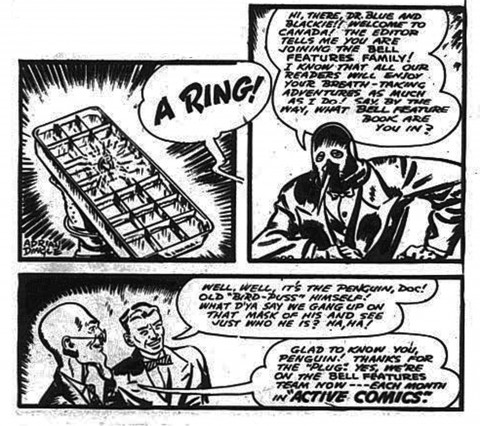
There are probably many more, but those are some of the call outs to Canada that come to mind from the Bell Features Books. Let’s to the Justice League Canada as carrying on the tradition.




Those opening panels in the Captain Wonder story look strangely familiar, lol. The panel of him on the window ledge is pretty much copied line for line from Batman’s 1940 origin story. http://images.wikia.com/batman/images/b/b2/Batman_origin_1940_02.jpg
Right on the nose, Kevin. I knew there was something strange about that panel and that was it. It’s from the Batman origin story in Detective Comics No. 33 (Nov. 1939) while the Captain Wonder story came out in the summer of 1942. I’ll add this to the long list of swipes in the Canadian Whites (Maybe we should start calling them the Canadian Swipes). The Batman image can be found here: http://www.grouchoreviews.com/content/features/86/3.gif
That’s ok. The whole first appearance of Batman was all swipes. The “crouching” was actually an Alex Raymond image originally, I believe.